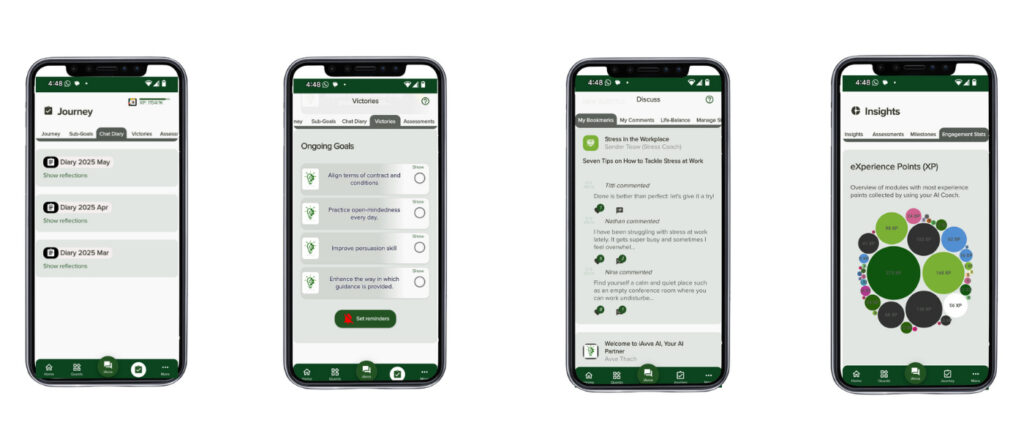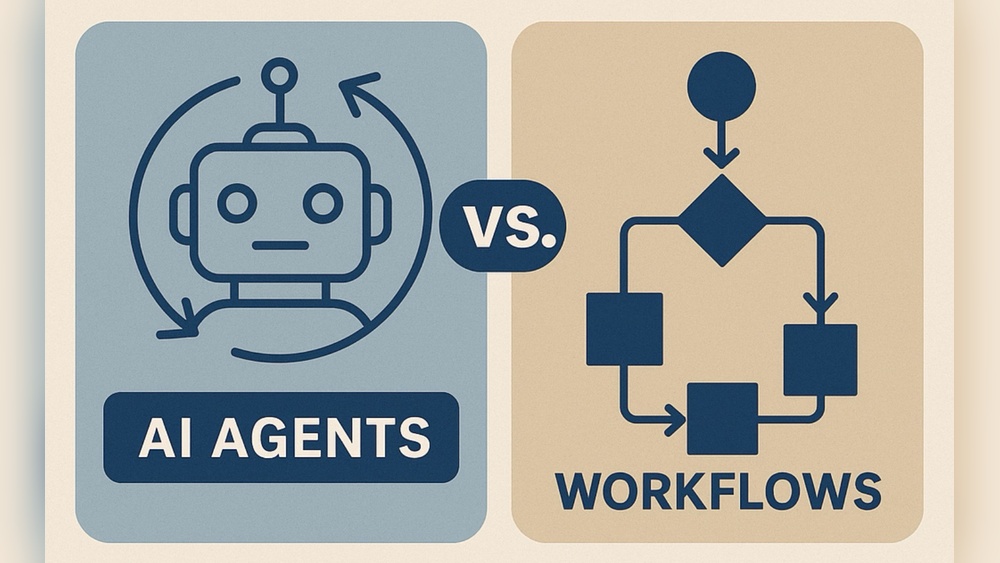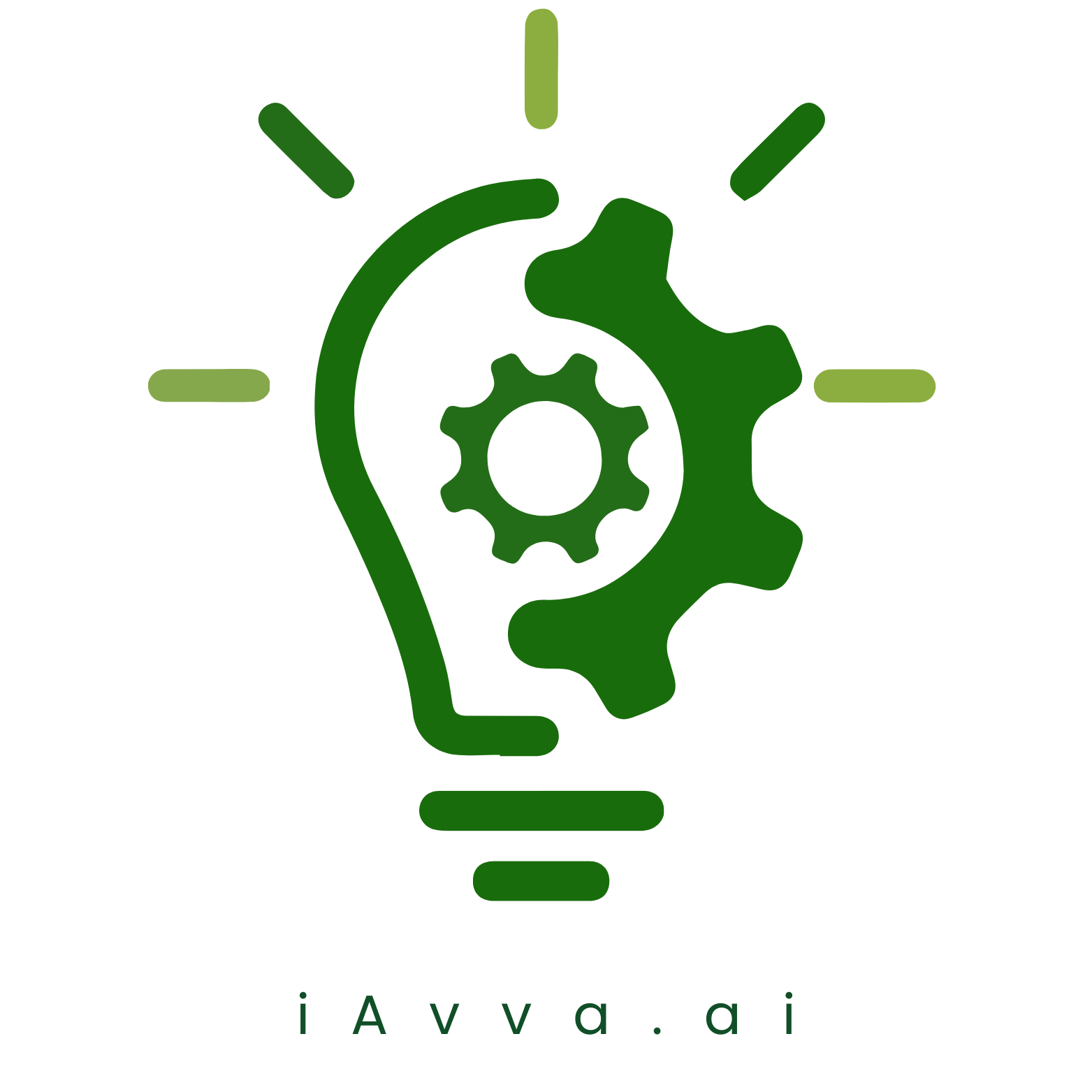Building a Successful AI Implementation Strategy: From Planning to Execution
Introduction
Welcome to the thrilling world of artificial intelligence! If you’ve ever wondered how to turn the buzz around AI into a strategic advantage for your business, you’re in the right place. Crafting an AI implementation strategy isn’t just about jumping on the latest tech bandwagon; it’s about strategically integrating advanced technologies into your organization’s DNA.
Think of it this way: implementing AI in your business is like baking a cake. You need the right ingredients, precise measurements, and a great recipe. Without these, you might end up with a flat disaster instead of a towering success! From planning to execution, this guide will walk you through every step of creating an effective artificial intelligence strategy that not only meets your goals but also propels your organization into the future.
The art of crafting an AI deployment plan involves understanding not just what technology can do, but how it aligns with your business objectives. It’s about leveraging smart technology integration and advanced analytics deployment to create a data-driven strategy that fuels growth.
So grab your favorite beverage, sit back, and let’s dive into how you can transform your organization with a robust AI adoption strategy. Whether you’re looking at machine learning implementation or exploring cognitive computing strategies, by the end of this post, you’ll be equipped to take actionable steps toward operationalizing AI solutions that really work!

Understanding AI Implementation Strategy
When we talk about an AI implementation strategy, we’re diving into a roadmap that guides organizations through the complex world of artificial intelligence. Think of it as your GPS for navigating the often winding roads of AI adoption.
So, why is having a well-defined strategy crucial? Well, without it, you might find yourself lost in the fog of data and technology, unsure of where to turn next. A solid AI implementation strategy not only clarifies your destination but also highlights the necessary stops along the way like assessing your current capabilities and aligning them with business objectives.
Definition of AI Implementation Strategy
An AI implementation strategy is a structured plan that outlines how an organization will integrate artificial intelligence technologies into its operations. This encompasses everything from identifying use cases for machine learning to ensuring that your data sources are clean and compatible.
Importance of a Well-Defined Strategy
A clear AI strategy is essential for several reasons:
- Alignment: It aligns AI initiatives with business goals, ensuring everyone is on the same page.
- Resource Management: It helps in allocating resources efficiently, avoiding wasteful spending on unnecessary technologies.
- Risk Mitigation: A well-thought-out approach identifies potential challenges early on, allowing you to devise contingency plans.
- Scalability: It lays down a framework for scaling AI solutions across various departments or functions within the organization.
Key Components of an Effective Strategy
An effective AI implementation strategy should include:
- Clearly Defined Objectives: What do you want to achieve? From predictive analytics implementation to intelligent automation, clarity is key.
- A Comprehensive Data Strategy: Your data is the foundation upon which your AI solutions will be built. Ensure quality and compatibility!
- An Agile Execution Framework: Flexibility allows you to adapt as new technologies emerge or as market conditions change.
- Cultural Readiness Assessment: Are your teams prepared for this shift? Address any cultural resistance upfront!
Did you know? According to recent studies, organizations with a defined AI strategy are 2.5 times more likely to achieve their desired outcomes compared to those without one!
The journey towards implementing artificial intelligence in business can feel daunting. However, by understanding and developing a robust AI deployment plan rooted in strategic planning principles, you’ll pave the way for successful integration and transformation. Get ready to embrace smart technology integration your future self will thank you!
Planning Your AI Implementation
When it comes to crafting a successful AI implementation strategy, planning is not just a phase it’s the foundation of your entire endeavor. Think of it like laying the groundwork for a skyscraper; without a solid base, your magnificent structure is destined to crumble. So, let’s dive into the essential steps that will set you on the path to AI success!
Assessing Organizational Readiness for AI
Before you rush headlong into the world of artificial intelligence, take a moment to assess whether your organization is truly ready for this leap. Here are some key indicators:
- Culture of Innovation: Is there an openness to new ideas, or do you face resistance at every turn?
- Data Availability: Do you have access to quality data that can fuel your AI systems?
- Talent Pool: Does your team possess the necessary skills or are they willing to learn?
Identifying Business Objectives and Goals
Your AI deployment plan should align with specific business objectives. Ask yourself:
- What problems are we trying to solve with AI?
- How can AI enhance our existing processes or products?
- What measurable outcomes do we want to achieve?
Conducting a Needs Analysis for AI Solutions
This step is crucial! A needs analysis will help pinpoint where AI can make the most impact. Consider conducting workshops or brainstorming sessions with key stakeholders. Here’s how:
- Survey Stakeholders: Gather insights from various departments about their pain points.
- Analyze Current Processes: Identify bottlenecks and inefficiencies that could be alleviated through intelligent automation.
- Create User Stories: Develop scenarios that illustrate how users will interact with the proposed solutions.

Pro Tip: Involve cross-functional teams in this planning stage! Diverse perspectives lead to more comprehensive solutions and greater buy-in from all parties.
The planning phase is where you build your roadmap your very own AI transformation roadmap! By taking these steps seriously, you’re not just setting yourself up for success; you’re operationalizing your AI solutions in a way that aligns perfectly with your overall business strategy.
Your next move? Start drafting that detailed deployment plan! Remember, every great execution begins with meticulous planning!
Developing an AI Deployment Plan
Creating a robust AI deployment plan is like assembling a complex puzzle; every piece needs to fit just right to see the bigger picture. So let’s break down this process into digestible chunks, shall we?
Coding the Deployment Plan: Phases and Timelines
Your first step in this journey is to outline the phases of your AI implementation strategy. Think of it as a roadmap where each stop represents a milestone in your project management journey:
- Phase 1: Research and Development – This is where you explore potential AI solutions that align with your business objectives.
- Phase 2: Pilot Testing – Roll out a small-scale version of your AI solution to iron out any kinks.
- Phase 3: Full-Scale Deployment – Once the pilot is successful, it’s time to go big or go home!
- Phase 4: Monitoring and Optimization – Post-deployment, continuously assess performance metrics and make necessary adjustments.
Selecting the Right Technology Stack for Implementation
The technology stack you choose can make or break your AI integration approach. Here are some considerations to keep in mind:
- Compatibility: Ensure that your selected tools can seamlessly integrate with existing systems.
- Scalability: Choose technologies that can grow with your business needs.
- Support and Documentation: Opt for platforms that offer robust support and comprehensive documentation.
Resource Allocation and Budgeting Considerations
No one wants to be caught off guard by unexpected costs during the execution of their AI business strategy. Here’s how to effectively allocate resources:
- Create a Budget Framework: Outline all expected costs including software, hardware, training, and maintenance.
- Pilot Program Funding: Allocate specific funds for pilot testing before full-scale deployment.
- Team Training Costs: Don’t forget about training your team on new systems this is crucial for successful adoption!
Key Takeaway: A well-structured AI deployment plan not only clarifies your path forward but also helps in managing resources effectively while minimizing risk. Remember, planning today leads to smoother execution tomorrow!
AI Integration Approach
When it comes to weaving AI into the fabric of your organization, think of it as adding a new thread to a complex tapestry. The goal is seamless integration, where the AI enhances existing systems rather than complicating them. So, how do we achieve this?
- Integrating AI with Existing Systems and Processes: Start by assessing your current infrastructure. Is it flexible enough to incorporate advanced technologies? Your AI implementation strategy should prioritize compatibility with existing systems to avoid costly overhauls.
- Ensuring Data Compatibility and Quality Standards: This is where the rubber meets the road. AI thrives on data, but not just any data high-quality, relevant data. Implement rigorous data governance practices to ensure your datasets are clean, structured, and ready for machine learning algorithms.
- Collaboration Across Departments for Successful Integration: Think of your organization as a sports team; everyone needs to be on the same page to score a goal. Encourage cross-departmental collaboration to foster an environment where insights from diverse areas can inform your AI adoption strategy. Regular workshops or brainstorming sessions can help break down silos.
Key Takeaway: A successful AI integration approach hinges on understanding your existing systems, ensuring top-notch data quality, and fostering interdepartmental collaboration. By focusing on these areas, you set the stage for a smooth transition into intelligent automation implementation.
The landscape of AI is ever-evolving think of it like trying to catch a wave while surfing; timing and technique are everything. As you operationalize your AI solutions, remain agile and ready to adapt your strategies based on feedback from both technology performance and user experience.

Executing the AI Strategy: From Planning to Action
Alright, folks! You’ve done the groundwork, mapped out your AI implementation strategy, and now it’s time to roll up those sleeves and dive into execution. Think of this phase as the thrilling climax of a blockbuster movie where all the planning finally pays off. But just like in any good film, there are plot twists and turns that can throw you off course. Here’s how to navigate through the excitement!
Establishing an AI Project Management Framework
The first step is to set up a solid project management framework that will serve as your guiding star. This isn’t just about picking a tool; it’s about creating an environment where your team can thrive. Consider frameworks like Agile or Scrum that emphasize flexibility and collaboration.
- Define roles and responsibilities clearly.
- Create a timeline with milestones to track progress.
- Encourage regular check-ins to maintain momentum.
Monitoring Progress and Performance Metrics During Execution
Now that you have your framework in place, let’s talk about metrics because what gets measured gets managed! Use key performance indicators (KPIs) tailored to your specific AI deployment plan. You want metrics that not only assess performance but also provide insights into areas needing improvement.
- Adoption Rate: How quickly are users embracing the new AI solutions?
- Accuracy Metrics: Is your machine learning implementation hitting its targets?
- Return on Investment (ROI): Are you seeing tangible benefits from your AI investments?
Troubleshooting Common Challenges in Execution Phase
No great adventure is without its challenges! Be prepared for hiccups along the way. Here are some common ones you might encounter:
- Siloed Departments: Ensure cross-functional collaboration by fostering communication between teams.
- Lack of Training: Invest in training programs to ensure everyone is equipped to use new technologies effectively.
- Poor Data Quality: Regularly audit data sources for accuracy and relevance garbage in, garbage out!
Your journey from planning to action is like assembling a jigsaw puzzle; every piece matters! By establishing a robust project management framework, monitoring progress meticulously, and troubleshooting effectively, you’re setting yourself up for success in operationalizing AI solutions. So grab that popcorn, because this show is just getting started!
Evolving Your AI Transformation Roadmap
In the fast-paced world of artificial intelligence, your AI implementation strategy is not a one-and-done affair. Think of it like a living organism; it needs to grow, adapt, and sometimes change direction entirely. Here’s how to keep your AI transformation roadmap fresh and effective.
The Importance of Feedback Loops in Strategy Adjustment
Feedback loops are the secret sauce to refining your AI adoption strategy. Regularly collecting insights from users and stakeholders can highlight what’s working and what’s not. This iterative approach allows for real-time adjustments that can enhance both the user experience and operational efficiency.
Key Point: Establish mechanisms for continuous feedback on AI systems to ensure alignment with business goals and user needs. This could include surveys, focus groups, or performance analytics.
Sustaining Momentum Post-Implementation: Training and Support Needs
Once your AI systems are up and running, don’t just sit back and relax! Providing ongoing training is crucial for ensuring that your team feels confident using these new tools. A well-executed training program not only empowers employees but also maximizes the return on investment in your AI initiatives.
- Create tailored training sessions based on user roles.
- Utilize online resources for continuous learning.
- Encourage mentorship programs where experienced users help newcomers.
Cultivating a Culture of Continuous Improvement with AI Solutions
Your organization should embrace a mindset of continuous improvement when it comes to implementing artificial intelligence in business. This means fostering an environment where experimentation is encouraged, failures are seen as learning opportunities, and innovations are celebrated.
“Companies that prioritize a culture of innovation see 30% higher returns than those that don’t.” – McKinsey & Company
To achieve this:
- Host regular brainstorming sessions focused on enhancing existing AI solutions.
- Incorporate agile methodologies into your project management framework for flexibility.
- Recognize and reward teams that successfully innovate or improve processes using AI technologies.

The evolution of your AI transformation roadmap is crucial for maintaining relevance in today’s digital landscape. By integrating feedback loops, investing in ongoing training, and fostering a culture of innovation, you’ll not only optimize your current systems but also lay the groundwork for future advancements in your enterprise AI solutions. Remember, the journey doesn’t end at implementation; it’s just getting started!
Conclusion: Leveraging AI for Business Growth and Innovation
As we wrap up our journey through the winding roads of an AI implementation strategy, it’s clear that the future of business is not just about keeping pace with technological advancements it’s about harnessing them to fuel growth and innovation. This isn’t merely a trend; it’s a necessity for organizations looking to thrive in a competitive landscape.
To truly leverage AI for business growth, consider these pivotal strategies:
- Data-Driven Decision Making: Your AI systems should be designed to analyze data effectively, providing actionable insights that drive strategic decisions. A robust data science implementation plan is essential here.
- Cognitive Computing Integration: By incorporating cognitive computing strategies into your AI business strategy, you can enhance customer interactions and personalize experiences, creating a significant competitive edge.
- Scalable AI Systems Development: Ensure that your AI solutions are scalable. This means planning for future growth from the outset your AI deployment plan should account for evolving needs and technological advancements.
- Intelligent Automation Implementation: Automating routine tasks frees up valuable human resources to focus on higher-level strategic initiatives. This can lead to increased efficiency and innovation across teams.
A common misconception is that implementing an artificial intelligence strategy is simply about adopting new technology. In reality, successful implementation requires a comprehensive approach that includes training, change management, and ongoing support. Leaders should foster a culture of continuous learning and adaptation as part of their AI adoption strategy.
“Companies with a strong AI transformation roadmap are 3 times more likely to achieve their strategic goals.”
The integration of advanced analytics into your operational framework not only enhances decision-making but also drives innovation. As you implement your AI solutions, always keep an eye on performance metrics and adjust your strategies accordingly agility is key in this fast-evolving landscape.
If you’re ready to take the next step in your AI journey, start by reviewing your current capabilities against the components outlined in this guide. What gaps exist? How can you leverage existing resources? Reach out to experts who can help refine your approach after all, collaboration is at the heart of successful digital transformation with AI!
An AI implementation strategy is a structured plan that outlines how an organization will integrate artificial intelligence technologies into its operations. This encompasses everything from identifying use cases for machine learning to ensuring that your data sources are clean and compatible.
” } }, { “@type”: “Question”, “name”: “Why is a well-defined AI strategy important?”, “acceptedAnswer”: { “@type”: “Answer”, “text”: “
A clear AI strategy is essential for several reasons: Alignment with business goals, efficient resource management, risk mitigation by identifying potential challenges early on, and providing a framework for scalability across various departments or functions within the organization.
” } }, { “@type”: “:Question”, “:name”:”What are key components of an effective AI implementation strategy?”, “:acceptedAnswer”:{ “:@type”:”Answer”, “:text”:”
- Clearly Defined Objectives: What do you want to achieve? From predictive analytics implementation to intelligent automation, clarity is key.
- A Comprehensive Data Strategy: Your data is the foundation upon which your AI solutions will be built. Ensure quality and compatibility!
- An Agile Execution Framework: Flexibility allows you to adapt as new technologies emerge or as market conditions change.
- Cultural Readiness Assessment: Are your teams prepared for this shift? Address any cultural resistance upfront!
” } } ] }, { “@type”:”SpeakableSpecification”, “@context”:{ “@vocab”:”https://schema.org/” }, “:xpath”:[ “/html/head/title”, “/html/head/meta[@name=’description’]/@content”, “/html/body/h1” ] } ] }




















Leave a Reply